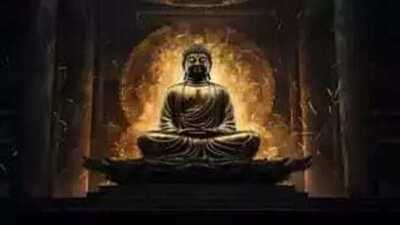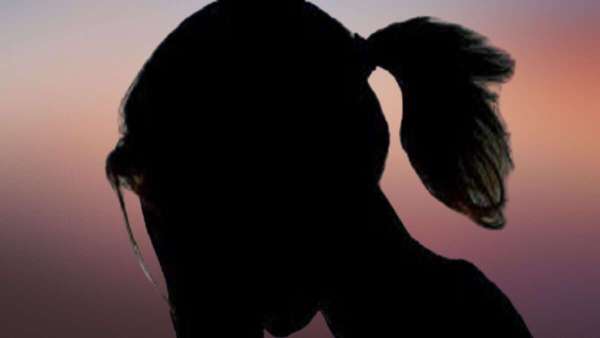
Let’s be honest. We’re all chasing something.
A new phone, a better body, a raise, a little more love, a little more validation. The moment we get one thing, our mind leaps to the next. It’s as if there’s an invisible voice inside constantly whispering: not enough yet.
That hunger—subtle, endless, and exhausting—is what Siddhartha Gautama, the Buddha, looked at more than 2,500 years ago. Long before there were dopamine hits from Instagram or 24-hour work cycles, he recognized the human mind’s restlessness. And he said something that still hits uncomfortably close: “Desire is the root of suffering.”
But here’s what we often miss—he wasn’t asking us to kill all desires. He was asking us to understand them. Because not all wanting is poison; it’s the blind, compulsive wanting that hurts.
Desire: The Fire That Keeps Us Restless
 The Buddha called this craving tanha—literally, thirst. Not the healthy thirst that keeps us alive, but the obsessive one that never feels quenched. He described three forms of it:
The Buddha called this craving tanha—literally, thirst. Not the healthy thirst that keeps us alive, but the obsessive one that never feels quenched. He described three forms of it:
- Craving for pleasure: the chase for comfort, beauty, recognition.
- Craving for existence: the hunger to be something—powerful, important, remembered.
- Craving for non-existence: the desire to escape pain, avoid reality, numb out.
Scroll through your feed, and you’ll see all three. People craving attention, craving a certain image, craving escape from loneliness through curated perfection. The Buddha’s words may be ancient, but they perfectly diagnose the anxiety of the digital age.
Why Our Cravings Hurt So Much
It’s not that having dreams or ambitions is wrong. The pain begins when our happiness becomes hostage to outcomes. When we say, “I’ll be content when I get this,” we quietly postpone peace.
You see it everywhere:
- The influencer refreshing notifications to measure self-worth.
- The corporate worker burning weekends for a title.
- The couple comparing their relationship to others’.
The Buddha called this loop the wheel of dukkha—the unease that never ends because we never stop chasing.
Buddha’s Minimalism Was Never About Less—it Was About Enough
 Here’s what makes Buddha’s minimalism different from today’s Instagram minimalism. It wasn’t about clean aesthetics or owning five shirts. It was about owning your mind.
Here’s what makes Buddha’s minimalism different from today’s Instagram minimalism. It wasn’t about clean aesthetics or owning five shirts. It was about owning your mind.
He discovered something radical: when you stop clinging, peace naturally arises. You don’t have to go live in a forest or delete every app. You simply need to see through the illusion that “more” equals “better.”
The Buddha’s middle path was practical. He rejected extremes—the indulgent palace life and the self-punishing ascetic life. Balance was his revolution.
Modern psychologists call it “equanimity.” It’s that quiet steadiness where you can enjoy pleasure without being enslaved by it, face pain without being broken by it.
Modern Craving: How We Feed Our Restlessness Let’s bring this closer home.
- Social Media: Every notification promises connection, but often deepens loneliness.
- Career: We trade peace for prestige, and call burnout “passion.
- Relationships: We love not to give, but to be completed—and end up disappointed.
- Escapism: We run from our feelings—through alcohol, binge-watching, or busyness—and call it coping.
Because the real issue isn’t the phone in your hand. It’s the craving in your mind.
The Real Meaning of Peace
When the Buddha sat under the Bodhi tree, he didn’t discover some supernatural formula. What he found was brutally simple: everything changes. And when we resist that truth—when we cling to people, achievements, moments as if they’ll last forever—we suffer.
Peace, then, isn’t found in the absence of desire. It’s found in the awareness of it. The moment you see desire rise and fall without jumping on it, it loses control over you.
That’s mindfulness—not a trendy buzzword, but a survival tool for the human spirit.
The Middle Way in Daily Life
Living Buddha’s message doesn’t mean moving to a monastery. It means paying attention.
When you crave something, pause. Ask: Will this bring peace—or just distraction?
- Practice gratitude—it quietly dissolves the urge for more.
- Simplify—not just your space, but your mental clutter.
Every time you watch desire instead of obeying it, you take a small step toward freedom.
That’s how liberation happens—not in one grand enlightenment moment, but in small, daily acts of awareness.
From Wanting More to Being Enough
Here’s the beautiful irony. The more we chase satisfaction, the further it runs. The moment we stop running, it comes closer.
Buddha’s life is proof that fulfillment doesn’t come from adding, but from subtracting—the noise, the comparison, the craving. His minimalism wasn’t aesthetic; it was psychological. He didn’t give up life; he understood it.
And maybe that’s what we all need today. To stop confusing excess with abundance. To stop mistaking distraction for joy. To sit quietly and ask: What am I really hungry for?
The Freedom of Wanting Less
We live in a world that rewards craving. The louder your hunger, the more the world applauds. But somewhere beneath that applause is fatigue—an ache to just stop running.
That’s why revisiting Buddha matters. He wasn’t just a monk; he was humanity’s first minimalist psychologist. He taught us that peace is not in acquiring, but in awakening.
When the noise of desire fades, what remains isn’t emptiness—it’s clarity. A quiet knowing that you don’t need to have everything to feel complete.
And maybe that’s the modern meaning of enlightenment:
not to float above the world, but to finally rest—content, grounded, and alive—in the middle of it.
Unlock insightful tips and inspiration on personal growth, productivity, and well-being. Stay motivated and updated with the latest at My Life XP.
-
Telangana govt moves SC over stay on 42 percent BC reservation

-
ED raids in multiple states in Rs 70-crore bank loan ‘fraud’

-
South Asian University student sexually assaulted in Delhi

-
WHO issues alert against substandard oral cough syrups in India

-
Several citizens invited for SIT meeting on Zubeen’s death probe decline invite
